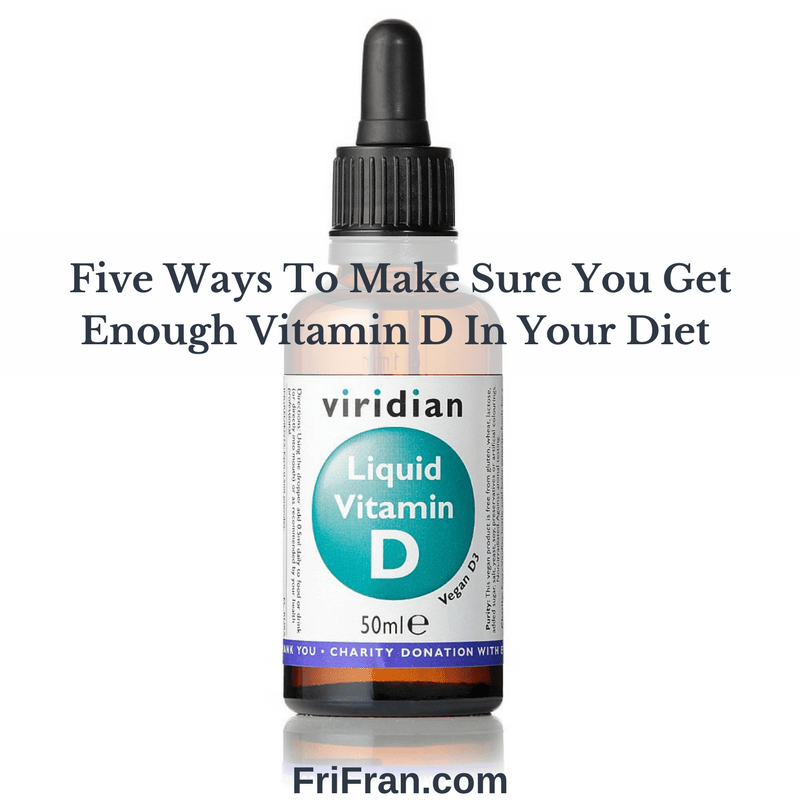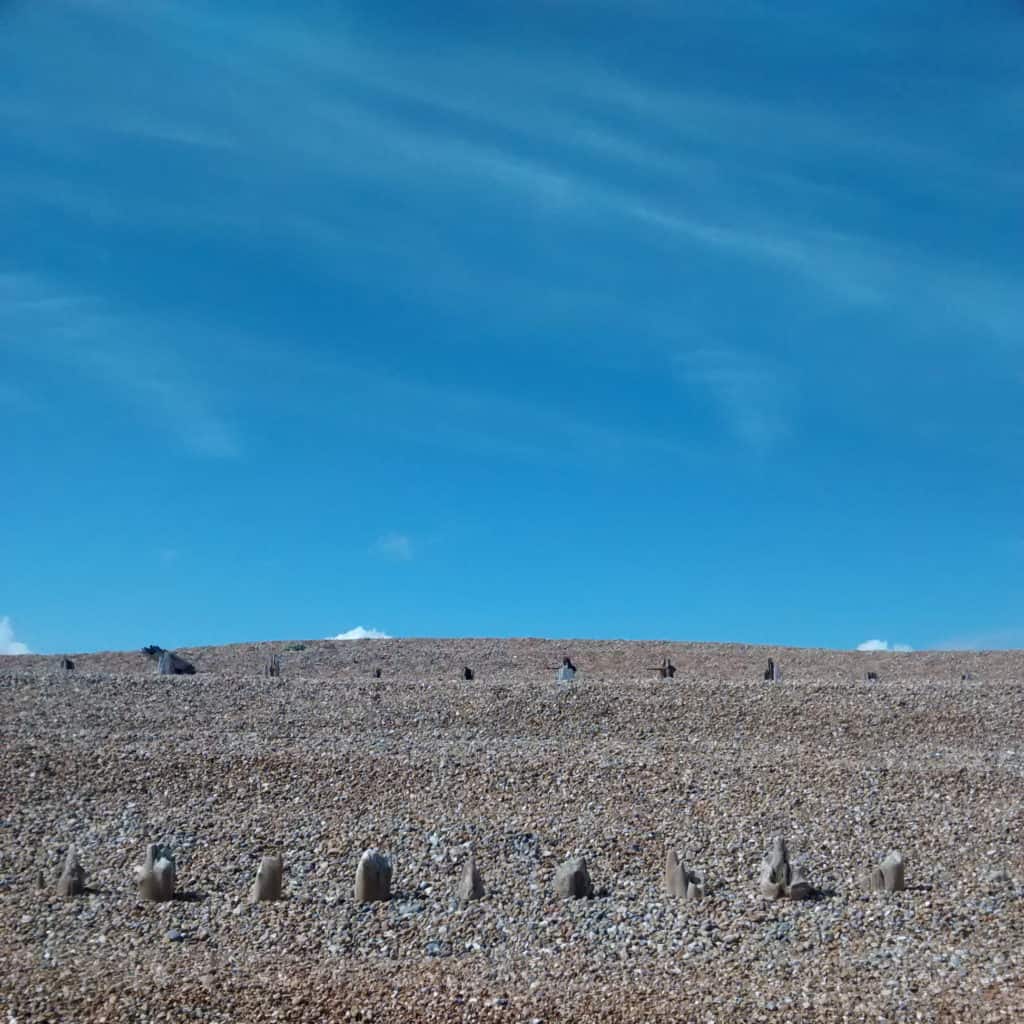
Vitamin D is essential for a healthy diet. Vegan or not, most of us (regardless of dietary choices or restrictions) do not get enough vitamin D in our life. Here are Five Ways To Make Sure You Get Enough Vitamin D In Your Diet.
What Is Vitamin D And Why Do You Need It???
Vitamin D helps keeps your bones and nervous system healthy by helping to control the amount of calcium and phosphate in our bodies. The full role of vitamin D in our health is not understood. It appears to have a role in the immune system but this is has not been fully investigated.
A lack of vitamin D can lead to bone deformities such as rickets, and bone pain caused by a condition called osteomalacia in adults. Low levels of vitamin D are also associated with a number of other diseases (various cancers, MS etc.) and disorders although the link to low vitamin D is still not fully understood.
Vitamin D is made by our bodies on exposure to sunlight. However, in the UK and parts of the world that do not get much sun, we often do not make enough to keep our bones and muscles healthy (the lack of sunlight is particularly bad in the winter months). In the UK, sunlight doesn’t contain enough UVB radiation in winter for our skin to be able to make vitamin D.
In the northern hemisphere, from late March/ early April to the end of September, most people should be able to get all the vitamin D they need from sunlight. The body creates vitamin D from direct sunlight on the skin when outdoors. Research is still ongoing and there is limited agreement on how much sunshine is required and how often to get enough vitamin D. However, to get enough vitamin D from spring and summer sun exposure you must expose around 30% of your body (e.g. legs, back), without sunscreen, to 15-30 minutes of sun at least twice a week. The darker your skin, the more sun exposure you will need. Balancing sun exposure for vitamin D with the risks of damaging skin through sun exposure are a careful balance.
So, between October and early March we cannot get enough vitamin D from sunlight.
What do we do???
Five Ways To Make Sure You Get Enough Vitamin D In Your Diet
So, vitamin D is super important. You need to make sure you have enough vitamin D. You eat a healthy, balanced diet, you exercise outdoors, you have low vitamin D… What can you do???
1. Five Ways To Make Sure You Get Enough Vitamin D In Your Diet – Sunshine

Sunshine is by far the best source of vitamin D but with indoor, office bound, lifestyles and the fear of skin cancer most of us do not get enough sun on our skin to get synthesise enough vitamin D.
To get enough vitamin D from spring and summer sun exposure we must expose around 30% of your body (e.g. legs or back), without sunscreen, to 15-30 minutes of sun at least twice a week (there is disagreement about these figures – some people suggest at least this exposure every day).
Even in the summer there are considerations you need to make to ensure you expose yourself to enough UVB radiation from the sun. The darker your skin, the more sun exposure you will need. The older you get (70+) your body will find it harder to make vitamin D. Sunscreen will severely limit the amount of vitamin D you can synthesise. If it is cloudy you will not be exposed to limited UVB radiation.
There is no risk of your body making too much vitamin D from sun exposure.
So, sun exposure in the summer is good and we are likely (differing factors being taken into account) to get enough vitamin D from sun exposure in the summer. The summer months we are fine.
If you do get enough sunshine in the summer, the winter months are barren. We cannot stock pile vitamin D in our bodies to see us through the dark winter months…
It is very difficult to get enough vitamin D in the winter months. The winter months are a BIG challenge. A couple of winter holidays in the sun (whilst holidays are great!) will not give you the vitamin D you need to see you through the winter.
2. Five Ways To Make Sure You Get Enough Vitamin D In Your Diet – Food
Food sources of vitamin D are few and far between and most are not vegan. There is some debate whether food sources of vitamin D are able to contribute a significant amount of vitamin D. However, it is well worth being conscious of vegan vitamin D food sources and making them part of your diet.
Fortified vegan foods are a good source (e.g. margarine, plant milks, plant yogurts, breakfast cereal) of vitamin D. Check that the vitamin D used to fortify the food is vegan (D2 is always vegan D3 is often not vegan, although it can be synthesised from lichen). If foods are fortified with vitamin D3 and not labelled as vegan they are probably not vegan.
Some food manufacturers are creating large amounts of vitamin D2 in mushrooms by exposing them to commercial ultraviolet light or direct sunlight. The vitamin D is well-retained in the mushrooms over the course of the typical storage life of fresh mushrooms, up to two weeks. This is the one known vegan food source of vitamin D (other than fortified foods). So, if you can’t buy high vitamin D mushrooms perhaps you can try putting your mushrooms outside on a windowsill???
And then you can make some excellent mushroom dishes like Mushroom and Winter Vegetable Bourguignon (one of my favourites) or Mushroom and Chestnut Pot Pie (just fabulous for winter!) and Mushroom Risotto with Grilled Mushrooms and Tarragon. I LOVE all of them!
3. Five Ways To Make Sure You Get Enough Vitamin D In Your Diet – Supplements
There are various recommendations as to how much and how often vitamin D supplements should be taken. Most doctors suggest everybody supplements during the winter months (where sunshine is of low UVB quality). But how much and are some supplements better than others?
The amount of vitamin D contained in supplements is can be expressed in international units (IU) and as micrograms (µg). Where 40 IU is equal to one microgram (1 µg) of vitamin D.
In the UK it is recommended that
- Babies up to the age of one need: 8.5-10 µg of vitamin D each day
- Children from the age of one and adults need: 10 µg of vitamin D each day.
This includes pregnant and breastfeeding women, and people at risk of vitamin D deficiency.
In the US the Institute of Medicine’s expert committee set a new ‘dietary reference intake’ for vitamin D. (Note that the IOM’s upper limit is not a recommended intake, but what the IOM considers the highest safe level)
- Infants age 0 to 6 months: 400-1000 IU (10-25 µg)
- Infants age 6 to 12 months: 400-1500 IU (10-37.5 µg)
- Age 1-3 years: 600-2500 IU (15-62.5 µg)
- Age 4-8 years: 600-3000 IU (15-75 µg)
- Age 9-70: 600-4000 IU (15-100 µg)
- Age 71+ years: 800-4000 IU (20-100 µg).
People who take supplements are advised not to take more than 100 µg of vitamin D a day, as it could be harmful (100 µg is equal to 0.1 milligrams). This applies to adults, including pregnant and breastfeeding women and the elderly, and children aged 11-17 years.
Some people have medical conditions that mean they may not be able to take as much vitamin D safely. If in doubt, you should talk to your doctor. If your doctor has recommended you take a different amount of vitamin D, you should follow their advice.
Most supplements contain vitamin D3, also called cholecalciferol, which is also the type added to breakfast cereals and fortified orange juice. Vitamin D3 usually comes from animals, usually from fish oil or from the lanolin in sheep’s wool. Vitamin D3 can also be derived from lichen. Unless a food fortified with vitamin D3 is labelled as vegan it is unlikely to be vegan. Vitamin D2, AKA ergocalciferol, is obtained from yeast, and is vegan.
There is also a debate about the efficacy of supplementing with vitamin D2 versus vitamin D3. Vitamin D3 seems to be widely held as the best source.
Vitamin D is a fat soluble vitamin, it has been mooted that taking vitamin D supplements with foods that contain fat might increase absorption.
I have low vitamin D levels and I supplement with Viridian Liquid Vitamin D3 (Vegan)*. One 0.5 millilitre drop of Viridian Liquid Vitamin D3* supplies 2000 IU (50 µg) of vitamin D.
*Affiliate link.
4. Five Ways To Make Sure You Get Enough Vitamin D In Your Diet – Artificial Sunlight
A controversial source of vitamin D is artificial sunlight – sun lamps. Now, these are a specific sort of sun lamp that emits a narrow band of UVB radiation. The theory is that they emit the narrow band of UVB radiation that enables the body to synthesise vitamin D but they do not emit wider UVB or UVA radiation that are linked to skin damage and the increased risk of cancer.
The narrow band UVB lamps are sold as medical devices. They have historically been used in the treatment of skin conditions such as psoriasis.
These lamps can be bought in a variety of sizes from small desktop to large vertical devices.
Sun lamps should be used with caution under medical supervision and only during the winter months.
These sun lamps should not be confused with ordinary sunbeds, sun booths or tanning lamps. These do not emit UVB radiation (or if they do it is in very low amounts) and are not recommended.
5. Five Ways To Make Sure You Get Enough Vitamin D In Your Diet – What Else?
So we have four Ways To Make Sure You Get Enough Vitamin D In Your Diet. Although each way provides you with some vitamin D none is a complete or able to provide enough vitamin D on its own.
So, what is the magic fifth way? Well, there isn’t one. Sorry!
The fifth way is to consider all of the above tailoring each of the four ways to you (age, skin colour), your environment (sunshine, cloud) and your exposure to sunshine. You may also want to take into account any testing you have had done to indicate your vitamin D levels and medical advice.
There is no vitamin D silver bullet. There has been an increasing focus the role of Vitamin D in health and it is a vitamin that we must ensure we get enough of.
Want To Work Out How Much Vitamin D You Are Consuming?
If you want to work out how much vitamin D you are consuming (through food and supplements) in your gluten-free, vegan life you could keep a food diary; logging everything you eat and drink. You can then work out exactly how much vitamin D you are getting on a daily, weekly and monthly basis. You should keep the diary for quite a few weeks for it to be representative of your intake.
I have a FREE Food Diary you can download. Just click the button below to sign-up and download.
What Is Your Fvourite Way To Make Sure You Get Enough Vitamin D In Your Diet?
There are lots and lots and lots of Tips and Tricks to get Enough Vitamin D In Your Diet out there – this is my tiny selection of thoughts. .
What are Your Tips and Tricks To Make Sure You Get Enough Vitamin D In Your Diet? Drop a comment below or ping me on social media! 🙂

